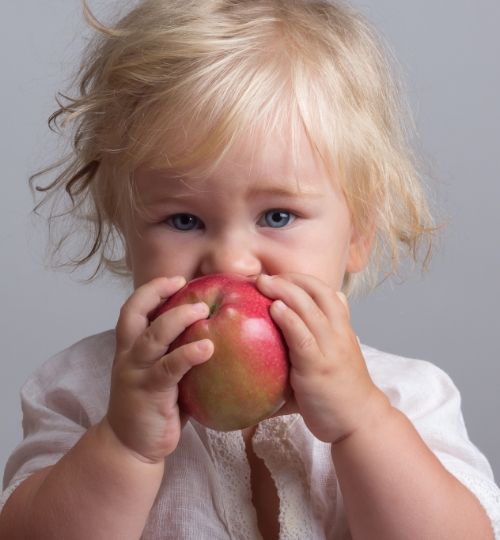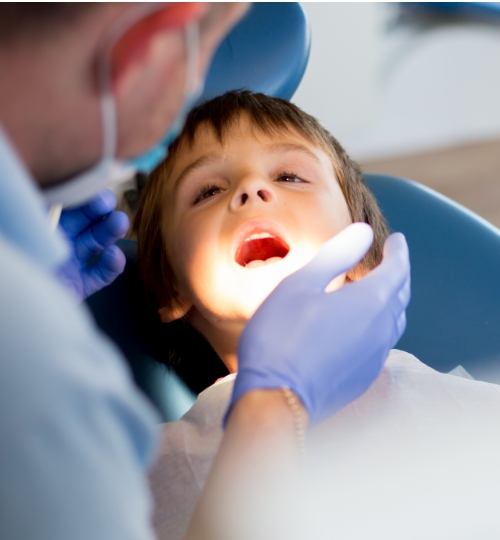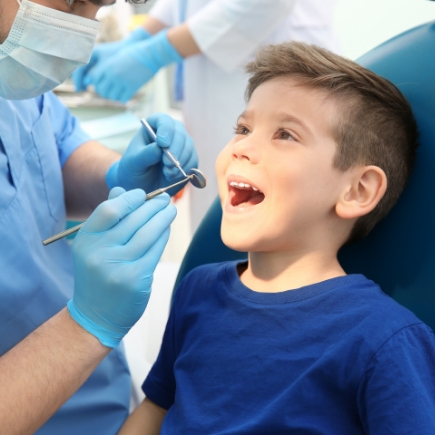
Over 35 years experience
YOUR DENTISTS IN
PLATEAU MONT-ROYAL
The distinguishing feature of our clinic is its pioneering use of technology. In addition to paperless management of dental records, numerous technologies allow us to provide dental care comfortably, quickly and with great precision.
ADVICE
Teeth of Babies and Young Kids

Problems When Baby Teeth Erupt
If your child’s baby teeth are starting to erupt and seem to be bothering him/her, you can rub his/her gums with your finger or with the back of a small chilled spoon. If the pain persists, your dentist, pharmacist or doctor may recommend an over-the-counter medicine to ease the pain.
What to avoid:
- Do not use pain medication that you rub on your child’s gums; it could be dangerous if swallowed.
- Do not give teething cookies. They may contain added or hidden sugar.
- Do not underestimate a fever. The eruption of new teeth does not make babies ill or give them a fever. If your child’s body temperature is going up and down, consult your doctor.
Primary Teeth Eruption Order
Most children’s baby teeth – also known as primary teeth, deciduous teeth, or milk teeth – emerge in a certain order. Here’s what you are likely to see as your child transitions from gums to teeth.
Tooth Decay in Babies
Breast milk, baby formula, cow’s milk and fruit juice all contain sugar. Babies may develop cavities if they:
- Fall asleep while drinking a bottle of milk, formula or juice;
- Fall asleep at their mother’s breast with milk still in their mouths.
This type of cavity can occur up to the age of four. Once your child has teeth, check them every month. Look out for stains or dull white lines on the teeth along the gums. Also watch for discoloured (dark) teeth. If you see any of these signs, make an appointment with your dentist right away. Cavities in young children must be treated quickly. Here is why.

Bedtime advice
If you give your child a bottle of milk, formula or juice at bedtime, stopping all at once won’t be easy. Here’s what to do:
- Put plain water in the bottle only.
- If your child refuses it, give her a clean soother, stuffed toy or blanket.
- If she cries, don’t give up.
- Comfort her and try again.
If this doesn’t work, try watering down your child’s bottle over a week or two until there is only water left. If your child falls asleep while nursing, try to take her off the breast while she is still awake.
Advice on the use of pacifiers
It is normal for babies to suck. That is how they relax and eat. By the time a child is two or three, he has less need to suck. If your child still likes to do so, it is better to give him a pacifier (soother) rather than let him suck his thumb.
Why? Because you can control when and how your child uses a pacifier, but not his thumb. Never put sugar, honey or corn syrup on a pacifier because they can cause cavities. It is best to get your child to stop sucking the pacifier before the age of three. Letting your child continue to suck his thumb or a pacifier after his permanent teeth have come in could cause affect how his jaw grows and the position of his teeth.
Additional Information
To know more on children’s oral health, visit the website of the Canadian Dental Association.
DO YOU WANT TO MAKE AN APPOINTMENT WITH ONE OF OUR DENTISTS?
Contact - EN
"*" indicates required fields


